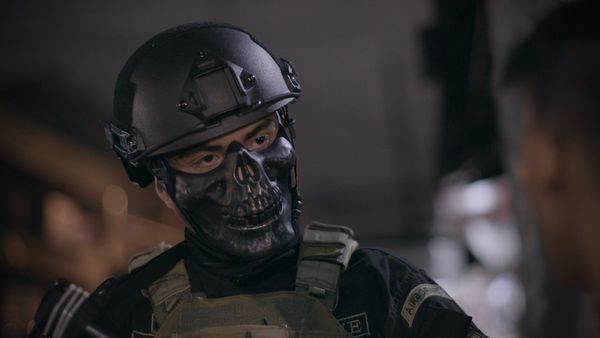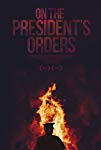Eye For Film >> Movies >> On The President's Orders (2019) Film Review
On The President's Orders
Reviewed by: Jennie Kermode

There's a particular colour that marks out Manila by night, a pinkish tone found in signs and vehicle lights that one doesn't see elsewhere. It shimmers in beads of sweat on semi-clad bodies stumbling through the dark, adds a pastel haze to motorcycle exhaust pipes, gleams off the side of a skull-face mask attached to a policeman's helmet. Other officers throng in the streets; we hear the barking and chatter of their radios. Where they move, the ambience changes. Some people follow them, heaping them with praise, but the crowd has thinned out. Some people have disappeared.
In late summer 2016, newly inaugurated Philippine president Rodrigo Duterte made a series of speeches in which he conflated drug addicts with drug pushers, described both as subhuman, and encouraged people to take the law into their own hands, saying that he would offer a bounty for every dead junkie. the police were exhorted to shoot to kill. Since then, some 12,000 Filipinos are believed to have died as a result, many in what are known colloquially as EJKs, or extra-judicial killings. One doesn't need to have anything to do with drugs to die this way - it's easy to frame someone - but most of the victims come from the poorest sections of the population.
James Jones and Olivier Sarbil's documentary is not the first film to explore this subject but it is remarkable in that it manages to tell the story from the point of view of police officers as well as addicts and civilian observers. We meet the formidable Captain Deimos (a man whose name literally translates as 'terror') who does not consider the restrictions placed on him by law to be very important in comparison to following his president's orders, and we meet everyday troopers who seem to genuinely believe that the addicts they arrest will see the light and recover as a result of this intimidation. Prisoners in an overcrowded cell are given apparently random punishments just to keep them in line, being caned across their open hands. Elsewhere, in a school, children are told they should think of the neighbourhood SWAT teams as their friends.
In a tiny room, a frightened woman sobs uncontrollably whilst a man is dragged away from her, police confiscating a bag of powder. He repeatedly protests that this is not his house. it's impossible to know who's telling the truth but the desperation of those involved is clear. We hear about how first time offenders willing to grass up other people can be spared jail and added to a watchlist, but people on that watchlist keep disappearing. Meanwhile, the owner of a funeral parlour watches from the sidelines. Recalling a character from Yojimbo; he seems to be the only one really gaining from all this.
Though it's somewhat uneven and its attempts to construct a narrative are not always successful, there's some powerful material here. in places it's deeply disturbing, with Jones and Sarbil skilled at capturing the mood of these contested streets and alleyways. The latter's cinematography lends it a noirish cast, which emphasises how far off kilter things have shifted. With Duterte recently clamping down hard on media freedoms and death squads apparently targeting political activists, this may be one of the last records of what's happening in the Philippines to emerge for some time. In the 1950s, we used to say "never again;" in the 21st Century we're waking up to the fact that genocides happen all the time, but that makes them no less chilling to watch.
Reviewed on: 14 Jun 2019















